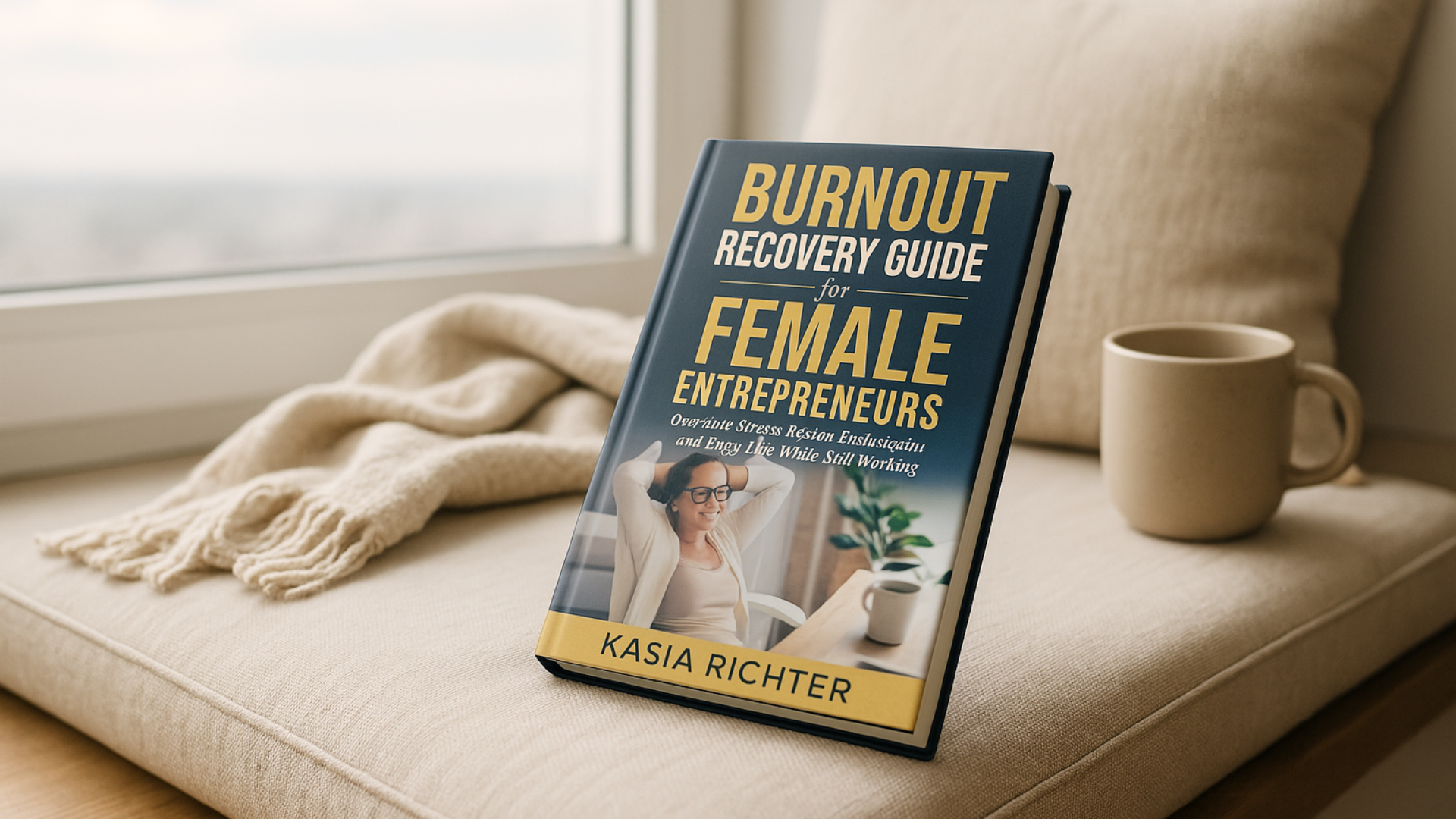Burnout Support for Purpose-Driven Women in Business

Book Review: Burnout Recovery Guide for Female Entrepreneurs by Kasia Richter
A steady, supportive resource for reclaiming energy without sacrificing purpose
Kasia Richter’s Burnout Recovery Guide for Female Entrepreneurs arrives with the clear intention of helping women who are feeling depleted, overextended, or quietly on the edge of burnout. Written specifically for women who are building businesses while also managing busy, layered lives, this book offers both validation and practical support. Rather than offering a generic reset or a short-term fix, Richter encourages readers to make space for sustainable change that honours their wellbeing.
What the book promises
This guide promises to help entrepreneurial women recover from burnout while continuing to show up for their work. Richter frames burnout not as a personal failure, but as a signal from the body and mind that something is no longer sustainable. The book is presented as a companion for women who are high-functioning but exhausted, offering both tools and perspective to help them find their way back to a more balanced, life-giving rhythm.
Richter aims to meet readers where they are, whether they are already aware of their burnout or just beginning to name it. The promise is not to overhaul your life overnight, but to support small, steady shifts that build emotional resilience and physical energy over time.
What the book delivers
Richter delivers a calm, thoughtfully structured guide that balances educational content with self-reflection. She covers what burnout is, how it manifests differently in women entrepreneurs, and why traditional productivity approaches can be counterproductive for those already overwhelmed. The content is organized in a way that helps readers move from awareness to gentle action.
Each chapter includes clear concepts and practical takeaways. Richter addresses boundaries, nervous system regulation, energy management, and mindset. What stands out is her sensitivity to the mental load that many women carry and her effort to make the book feel manageable, even for someone already running on low capacity.
The book also weaves in real-life stories that illustrate the complexity of burnout recovery. These moments help bring the material to life and add a tone of reassurance. Readers will not find prescriptive steps here. Instead, they are invited into a process of tuning in, making intentional choices, and redefining how they relate to work.
Style and structure
The writing style is clear and unhurried. Richter’s voice is steady and non-judgmental. She writes with care, avoiding alarmist language or productivity clichés. The tone is appropriate for the topic. It holds the seriousness of burnout with respect, while also offering hope and practical guidance.
Structurally, the book moves in a logical sequence, beginning with understanding burnout and its roots, then shifting into mindset work, behaviour change, and long-term sustainability. Chapters are digestible, with simple headings and short sections that make the material feel accessible. This format allows readers to pause, reflect, or return to key ideas without feeling lost.
Richter includes gentle calls to action at the end of many chapters, but they are never overwhelming. They serve as invitations rather than obligations. This contributes to the overall sense of spaciousness in the book’s design and delivery.
Where the book shines
The most compelling aspect of this book is its tone. Richter writes with deep empathy for women who are trying to do too much, often for too long, without enough support. She does not suggest giving up ambition, but she does invite readers to question the cost of constant striving.
Her focus on nervous system regulation is especially valuable. Rather than relying on mindset shifts alone, she acknowledges the physiological effects of burnout and introduces accessible tools for calming the body. These practices feel realistic for readers who may not have hours each day to devote to recovery.
Richter also addresses the internal narratives that keep many women stuck in cycles of overwork. She brings gentle awareness to the beliefs that can make rest feel unsafe or unearned and offers thoughtful strategies for replacing them with more supportive internal dialogue.
Light limitations
This is not a clinical guide, and it does not claim to be. Readers looking for in-depth research on trauma, long-term mental health support, or detailed somatic interventions may need to supplement it with additional resources. The book is best viewed as an entry point to understanding and responding to burnout in everyday life.
Some readers who are further along in their recovery or who have read widely in the burnout space may find parts of the content familiar. However, the strength of this book lies in its voice and its integration of reflection, not in delivering brand-new theory.
A few metaphors lean toward familiar wellness language, which may not resonate with all readers. Still, the overall message remains grounded and practical, with more focus on clarity than inspiration.
Final thoughts
Burnout Recovery Guide for Female Entrepreneurs is a clear, gentle, and supportive resource for women who are tired of pushing through. Kasia Richter offers more than advice. She offers perspective, care, and permission to do things differently. The book respects the complexity of the burnout experience while keeping the process of recovery manageable and personal.
Instead of urging readers to bounce back quickly, Richter encourages them to pause and reassess what truly matters. She invites a different way forward, one that protects health, conserves energy, and makes space for self-trust. For women balancing ambition with exhaustion, this guide may be the quiet and steady support they did not know they needed.
Highly recommended for women entrepreneurs and purpose-driven professionals who are ready to recover from burnout with clarity and care, without abandoning their ambitions or values.